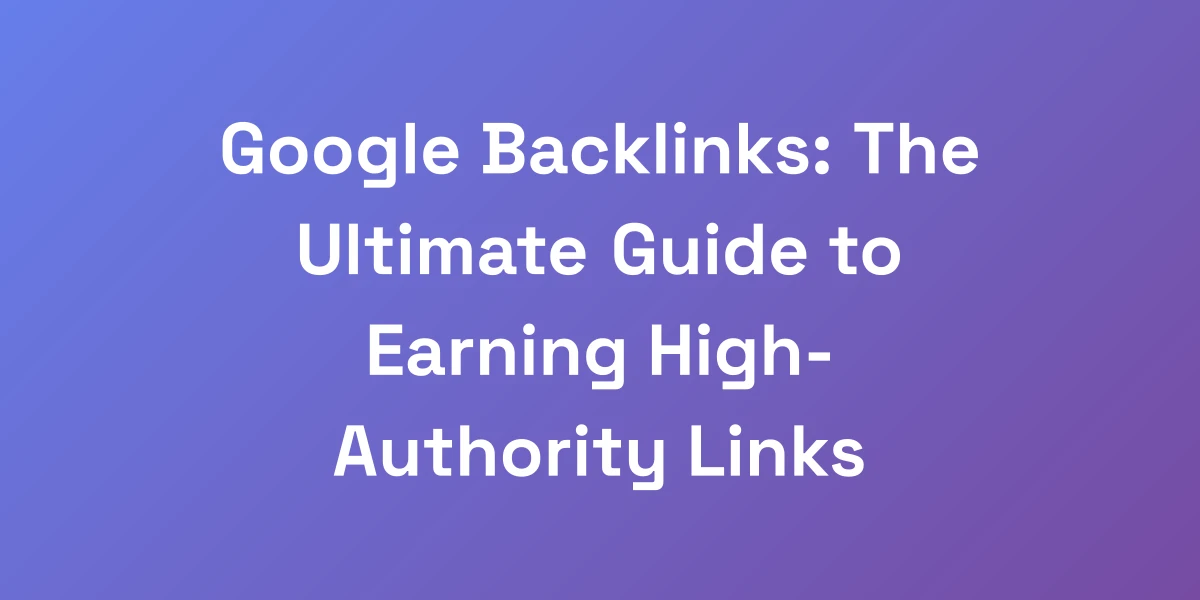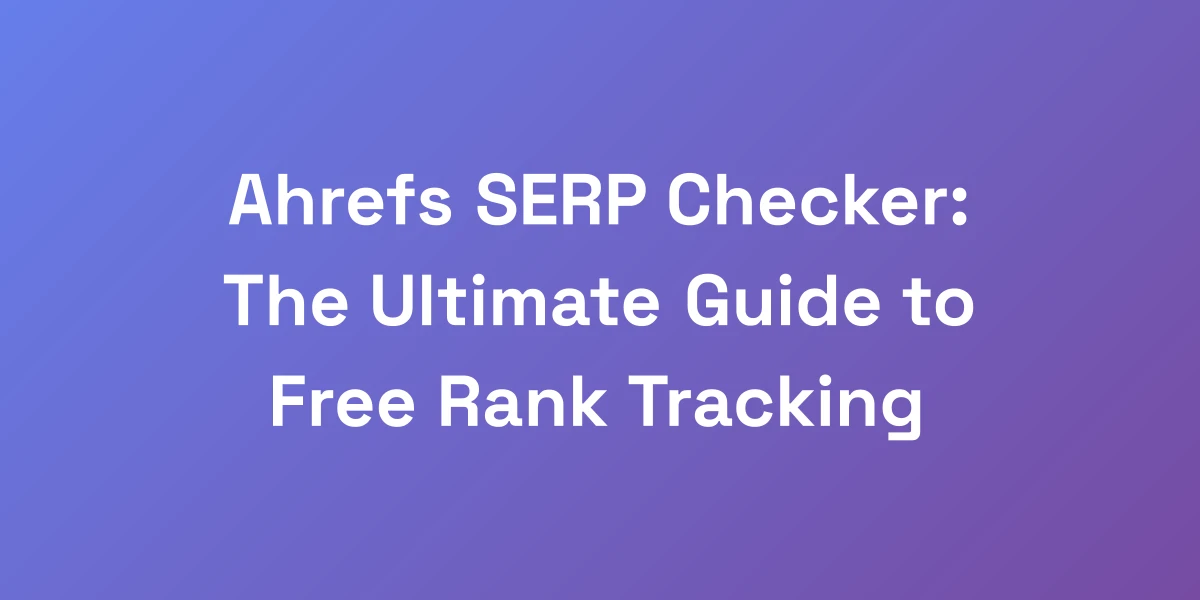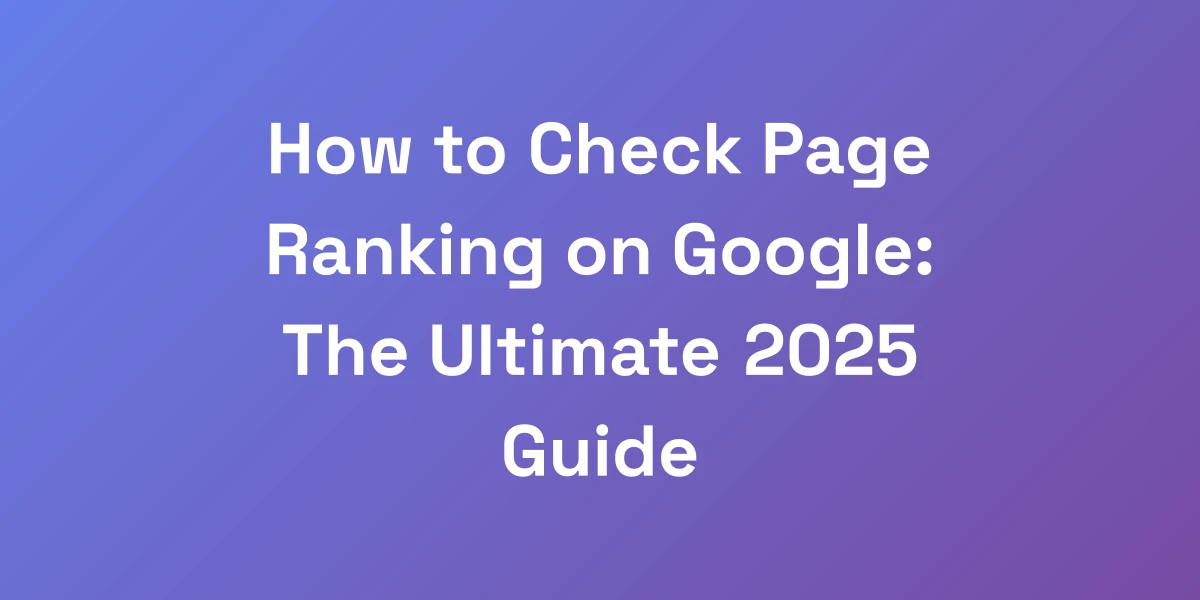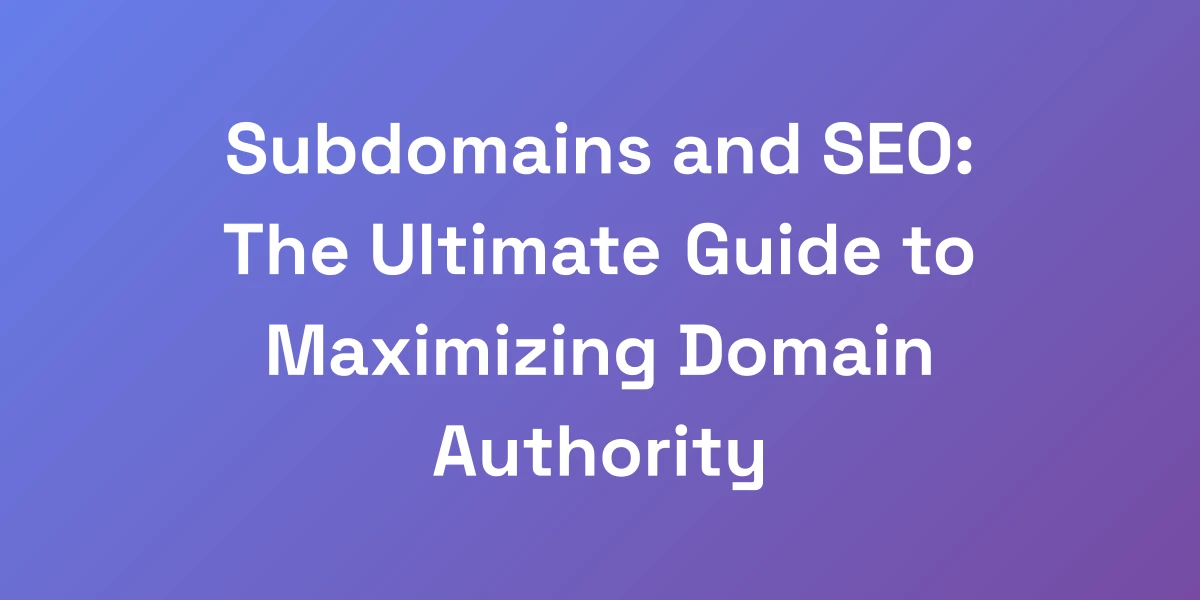
Ahrefs PageRank vs Google: The Ultimate Authority Metric Battle
Apr 5, 2025 | By [email protected]
The Evolution from PageRank to Modern Authority Metrics
Let me tell you something that most SEO “gurus” won’t: PageRank isn’t dead – it just evolved.
When Google first introduced PageRank, it revolutionized how we measure website authority. But here’s the real truth that nobody’s talking about: while Google stopped showing PageRank publicly, its principles still form the backbone of modern SEO metrics. What Ahrefs did was take this concept and transform it into something even more powerful for today’s digital landscape.
The Birth of Google PageRank
Back in the early 2000s, Google introduced PageRank as a way to measure the importance of web pages based on their backlink profiles. This was a groundbreaking shift from content-based metrics to link-based authority.
Imagine PageRank as the digital version of word-of-mouth referrals. The more high-quality links a page had, the more trustworthy it was perceived by Google, much like how personal recommendations build trust in real life.
This system quickly became a cornerstone of SEO, guiding strategies focused on acquiring quality backlinks to boost rankings.
Why Google Discontinued Public PageRank
In 2013, Google decided to stop updating PageRank publicly through the toolbar. This move left SEO professionals scrambling for alternative metrics to gauge their websites’ authority.
Why? Because the SEO landscape had become more complex. Google realized that an overemphasis on a single metric like PageRank was too simplistic for the nuanced nature of modern websites and content.
This decision forced the industry to innovate, leading to the rise of third-party tools that could estimate and enhance authority metrics without relying on Google’s internal algorithms.
How Ahrefs Filled the Authority Metric Void
Enter Ahrefs. When Google pulled the plug on publicly visible PageRank, Ahrefs saw an opportunity to step up. They developed a comprehensive suite of metrics designed to help SEO practitioners navigate the new landscape.
Ahrefs didn’t just replicate PageRank; they expanded on it. By incorporating more nuanced signals and real-time data, Ahrefs provided a more detailed and actionable view of a website’s authority.
This move wasn’t just filling a void—it was transforming how we measure and understand authority online, making Ahrefs an indispensable tool in the SEO toolkit.
The Core Differences in Calculation Methods
Understanding the differences between Google’s original PageRank and Ahrefs’ metrics is crucial for effective SEO strategies.
Google’s PageRank was primarily about counting backlinks and evaluating their quality based on the authority of the referring pages. It was a binary system: more high-quality links meant higher authority.
Ahrefs, on the other hand, uses a more sophisticated approach. Their Domain Rating (DR) and URL Rating (UR) not only consider the quantity of backlinks but also their relevance, diversity, and the overall link profile. These website performance indicators provide a deeper insight into a website’s authority and potential for ranking.
Moreover, Ahrefs updates their metrics frequently, offering near real-time data that reflects the dynamic nature of the web. This agility allows SEO professionals to respond swiftly to changes and optimize their strategies accordingly.
Impact on Modern SEO Strategies
The shift from Google’s PageRank to tools like Ahrefs has had a profound impact on SEO strategies.
SEO is no longer just about amassing links; it’s about creating valuable content that naturally attracts high-quality backlinks, fostering relationships with authoritative sites, and continuously monitoring and adjusting link profiles to maintain and enhance authority.
Modern SEO strategies now focus on creating valuable content that naturally attracts high-quality backlinks, fostering relationships with authoritative sites, and continuously monitoring and adjusting link profiles to maintain and enhance authority.
By leveraging Ahrefs, businesses can develop more sophisticated and effective SEO strategies that align with the complexities of today’s search algorithms.
Understanding Ahrefs’ Authority Metrics In-Depth
Listen, if you’re still obsessing over the old PageRank scale, you’re leaving money on the table. Ahrefs has developed a sophisticated system that goes beyond simple link counting.
We’re talking about a complex algorithm that considers factors Google themselves would be proud of. The beauty of Ahrefs’ metrics is that they give you actionable insights you can actually use to grow your business, not just vanity metrics that make you feel good.
Ahrefs Rank (AR) Explained
Ahrefs Rank (AR) is a metric that ranks all the websites in Ahrefs’ database based on their backlink profiles. The site with the strongest backlink profile overall is ranked #1, the next strongest is #2, and so on.
Think of AR as a comprehensive measure of a site’s overall authority. It doesn’t just count links; it evaluates the quality, relevance, and authority of each backlink, providing a more holistic view of a website’s standing in the digital world.
This ranking allows businesses to benchmark themselves against competitors and identify opportunities for growth by targeting higher-authority sites for backlinks.
Domain Rating (DR) vs URL Rating (UR)
Domain Rating (DR) and URL Rating (UR) are two pivotal metrics in Ahrefs’ arsenal, each serving a unique purpose.
Domain Rating (DR) assesses the overall authority of an entire domain by analyzing its backlink profile. It’s like evaluating a book by looking at all the citations it has received across multiple publications.
On the other hand, URL Rating (UR) focuses on the authority of a specific page. It’s akin to measuring the influence of a single chapter within that book.
By understanding both DR and UR, SEO professionals can strategically target both overall domain authority and specific page authority to optimize their SEO efforts comprehensively.
How Ahrefs Calculates Page Authority
Ahrefs employs a multifaceted approach to calculate Page Authority. It’s not just about the number of backlinks; it’s about the quality and context of those backlinks.
Factors include:
- Quality of linking domains
- Relevance of the linking content
- Diversity of backlink sources
- Anchor text distribution
This comprehensive analysis ensures that Page Authority reflects the true influence and trustworthiness of a page, providing more reliable data for making informed SEO decisions.
Real-time vs Historical Data Analysis
One of the standout features of Ahrefs is its ability to provide both real-time and historical data analysis.
Real-time data allows businesses to monitor their backlink profiles continuously, identifying new opportunities and quickly responding to any changes that might affect their authority.
Meanwhile, historical data offers insights into trends and patterns over time. This is invaluable for understanding the long-term effectiveness of SEO strategies and making data-driven adjustments.
By leveraging both real-time and historical data, businesses can maintain a dynamic SEO strategy that adapts to the ever-changing digital landscape.
The Role of Backlink Quality in Rankings
Backlink quality is paramount in determining rankings. It’s not just about having a large number of backlinks but having links from authoritative and relevant sources.
High-quality backlinks act as endorsements, signaling to search engines that your content is trustworthy and valuable. These links come from reputable websites within your industry, adding significant weight to your authority.
On the flip side, low-quality or spammy backlinks can harm your rankings. They dilute your authority and can even lead to penalties from search engines. Therefore, focusing on acquiring and maintaining high-quality backlinks is crucial for sustainable SEO success.
Leveraging Both Metrics for Maximum SEO Impact
Here’s the million-dollar secret: successful SEO isn’t about choosing between PageRank principles and Ahrefs metrics – it’s about understanding how to use both to your advantage.
We’ve helped businesses scale to multiple millions by focusing on what actually moves the needle. The key is knowing how these metrics translate into real business growth. Let us show you exactly how to combine these insights for maximum impact.
Creating a Hybrid Approach to Authority Building
Combining Google’s PageRank principles with Ahrefs’ modern metrics creates a robust framework for authority building.
Start by focusing on acquiring high-quality backlinks, consistent with PageRank’s original emphasis. Then, use Ahrefs’ Domain Rating and URL Rating to refine and optimize your link-building strategy by targeting specific areas of improvement.
This hybrid approach ensures that you’re not only building a strong backlink profile but also enhancing overall domain and page authority, leading to sustained and scalable SEO performance. Additionally, integrating automated content systems can further streamline your content creation process.
Using Ahrefs Data to Predict Google Rankings
Ahrefs provides valuable data that can help predict Google rankings, albeit indirectly. By analyzing Domain Rating and URL Rating, you can gain insights into which pages are likely to rank higher based on their authority.
Moreover, Ahrefs’ keyword tracking tools allow you to monitor your rankings and adjust your strategies in real-time, ensuring that your efforts are always aligned with search engine algorithms.
By leveraging this data, you can make informed decisions that enhance your visibility and competitiveness in search results.
Strategic Link Building Using Both Metrics
Effective link building requires a strategic approach that considers both PageRank principles and Ahrefs metrics.
Identify high-authority sites within your niche and focus on acquiring backlinks from them. Use Ahrefs’ tools to analyze potential linking domains, ensuring they have high Domain Ratings and relevant content.
Additionally, diversify your backlink sources to avoid dependency on any single domain. This not only strengthens your authority but also makes your backlink profile more resilient to algorithm changes.
Measuring ROI of Authority Building Efforts
Measuring the return on investment (ROI) of your authority-building efforts is essential for assessing effectiveness and guiding future strategies.
Track key metrics such as:
- Organic traffic growth
- Keyword rankings improvement
- Conversion rates from organic traffic
- Domain and URL Ratings in Ahrefs
By correlating these metrics with your SEO activities, you can determine which efforts are yielding the best results and adjust your strategy accordingly to maximize ROI.
Future-Proofing Your SEO Strategy
The digital landscape is constantly evolving, and so must your SEO strategy. Staying ahead means anticipating changes and adapting proactively.
Use Ahrefs’ continuous updates and comprehensive data to keep track of emerging trends and algorithm changes. By integrating both PageRank principles and Ahrefs metrics, you create a flexible and resilient SEO strategy that can withstand shifts in search engine algorithms and user behavior.
This forward-thinking approach ensures that your authority metrics remain relevant and effective, securing long-term SEO success.
Common Misconceptions and Expert Insights
Stop believing the myths that are holding you back. We’ve seen too many businesses fail because they followed outdated advice about authority metrics. The truth is, both PageRank principles and Ahrefs metrics have their place in modern SEO. But here’s what nobody tells you: it’s not about the numbers themselves – it’s about how you interpret and act on them.
Let us break down the biggest misconceptions and show you what actually works.
Debunking Popular PageRank Myths
One common myth is that PageRank is completely obsolete since Google stopped updating it publicly. In reality, the foundational principles of PageRank—such as the importance of backlinks and their quality—are still integral to Google’s ranking algorithms.
Another misconception is that quantity trumps quality in link building. This couldn’t be further from the truth. High-quality backlinks from authoritative sources are far more valuable than numerous low-quality links.
By understanding and applying the true principles behind PageRank, you can build a stronger and more effective SEO strategy.
The Truth About Ahrefs Metrics Accuracy
Some believe that Ahrefs metrics like Domain Rating and URL Rating are mere approximations and can’t be fully trusted. While no tool can perfectly replicate Google’s internal algorithms, Ahrefs provides highly accurate and reliable estimates based on extensive data analysis.
These metrics are continuously refined and updated to reflect the latest changes in SEO practices, making them a dependable resource for authority measurement and strategy development.
Trusting and effectively using Ahrefs metrics can significantly enhance your SEO efforts and outcomes.
Case Studies of Successful Implementation
Consider a mid-sized e-commerce website struggling to climb Google’s search results. By leveraging Ahrefs, they identified high-authority opportunities and optimized their backlink strategy accordingly. Over six months, their Domain Rating increased by 15 points, and their organic traffic doubled.
Another example is a content-driven blog that utilized Ahrefs’ keyword tools and Domain Rating insights to refine their content strategy. This led to a 30% increase in search rankings and a substantial boost in user engagement. Moreover, SEO for Airbnb can also benefit from similar tailored strategies.
These success stories illustrate how combining PageRank principles with Ahrefs’ advanced metrics can drive impressive SEO results.
Expert Opinions and Industry Consensus
Industry experts agree that combining traditional SEO principles with modern tools like Ahrefs leads to superior results. SEO veterans emphasize the importance of understanding both the foundational concepts of link authority and the advanced insights provided by contemporary metrics.
Thought leaders in the SEO community highlight that relying solely on outdated metrics or ignoring advanced tools can limit a website’s potential. Embracing a balanced approach that leverages both PageRank principles and Ahrefs metrics is the consensus for achieving long-term SEO success.
Avoiding Common Strategic Mistakes
Many businesses make critical mistakes by overemphasizing quantity over quality in their link-building efforts. This approach can dilute their authority and lead to penalties from search engines.
Another common error is neglecting to diversify backlink sources. Relying too heavily on a single domain or type of backlink can make your strategy vulnerable to algorithm changes.
Additionally, some overlook the importance of continuously monitoring and adjusting their SEO strategies based on updated metrics and performance data.
Avoiding these pitfalls is crucial for maintaining a strong and effective authority profile that drives sustained SEO success.
Implementation Strategy and Action Plan
Let’s cut through the fluff and get to what actually makes you money. We’re going to give you the exact step-by-step process to leverage both PageRank principles and Ahrefs metrics for maximum impact. This isn’t theory – these are battle-tested strategies that have generated millions in revenue for businesses. Follow this framework, and you’ll see results faster than you thought possible.
Quick-Start Guide to Metric Analysis
Start by conducting a comprehensive audit of your current backlink profile using Ahrefs. Identify your Domain Rating and URL Rating to understand where you stand.
Next, analyze your competitors’ backlink profiles to uncover opportunities and gaps. Look for high-authority sites that you can target for your own link-building efforts.
Use Ahrefs’ Site Explorer to gain insights into which types of content attract the most backlinks and which strategies are yielding the best results.
Creating Your Authority Building Strategy
Develop a targeted strategy focusing on acquiring high-quality backlinks from authoritative and relevant sources. Prioritize content marketing, guest posting, and strategic partnerships to build a robust backlink profile.
Incorporate both DR and UR metrics to prioritize which pages and domains to target. Ensure that your link-building efforts align with the overall goals of your website, whether that’s increasing traffic, improving conversions, or enhancing brand authority.
Regularly update and refine your strategy based on ongoing analysis and performance data from Ahrefs.
Tools and Resources for Implementation
Leverage Ahrefs’ comprehensive suite of tools to support your SEO efforts:
- Site Explorer: Analyze your backlink profile and identify opportunities.
- Keyword Explorer: Find high-potential keywords to target in your content.
- Content Explorer: Discover top-performing content to inspire your own strategy.
- Rank Tracker: Monitor your keyword rankings and track progress over time.
Additionally, use other complementary business intelligence tools like Google Analytics and Google Search Console to gain a holistic view of your SEO performance.
Measuring and Tracking Progress
Set clear, measurable goals for your SEO efforts, such as increasing Domain Rating, improving keyword rankings, or boosting organic traffic.
Regularly monitor these metrics using Ahrefs and adjust your strategies based on the data. For instance, if you notice a decline in Domain Rating, investigate the cause and implement corrective measures promptly.
Use dashboards and reporting tools to visualize your progress and communicate results to stakeholders effectively.
Scaling Your Success
Once you’ve established a solid authority profile and achieved your initial SEO goals, it’s time to scale your efforts.
Expand your link-building initiatives by targeting more high-authority sites and diversifying your backlink sources. Invest in creating more high-quality content that attracts natural backlinks and engages your audience.
Continuously optimize and refine your strategies based on performance data, ensuring that your SEO efforts grow in tandem with your business objectives.
By scaling effectively, you can maintain momentum and drive sustained growth in your online presence and revenue.
Conclusion
In the battle of Ahrefs PageRank vs Google, understanding and leveraging both metrics is the key to unlocking unprecedented SEO success.
We’ve delved deep into the evolution of authority metrics, explored the intricacies of Ahrefs’ sophisticated system, and provided actionable strategies to harness the power of both sets of metrics.
Remember, it’s not about choosing sides—it’s about blending the foundational principles of PageRank with the advanced insights of Ahrefs to create a robust, effective SEO strategy.
Now, it’s your turn to implement these strategies. Start by conducting a thorough metric analysis, build your authority with targeted link-building, and continuously monitor and adapt your approach based on real-time data.
Ready to take your SEO to the next level? Dive into Ahrefs, embrace the principles of PageRank, and watch your online authority and business growth soar.
Take action today: Audit your backlinks with Ahrefs, refine your strategy, and start dominating the search rankings!
What strategies have you found most effective in building your site’s authority? Share your experiences and let’s grow together.








